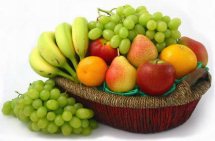Image source
What is the best vitamin for a child? This is a common question of most parents. Drugstore personnel tend to reply, ‘The complete combination, of course!’
A multivitamin combination is usually composed of the B complex group, vitamin A, vitamin D3 or ergocalciferol, vitamin E or tocopherol and vitamin C. These active components are normally in smaller amounts and act only as additional supplements for the body. While adults may have enough supply of these from foods, kids – particularly the younger ones require more nutrients for growth.
Vitamins and other supplements are commonly regarded as OTC products. If you are planning to buy a multivitamins product for your child, the following active components can also be great essentials.
Sunday, May 15, 2011
Antacid Side Effects
Antacids are normally non-prescription drugs. They have been known as relievers for hyperacidity associated with peptic ulcer, gastritis, esophagitis and dyspepsia. They are used in combination with an h2 receptor antagonist (ranitidine, cimetidine) or a proton-pump inhibitor (omeprazole, esomeprazole) as supplements for faster relief of ulcer symptoms.
Antacids may cause congestive heart failure
Sodium bicarbonate can elevate bicarbonate or sodium in the body. Avoid prolonged use of this antacid. In presence of heart disease, magnesium based antacids should also be considered. This drug can also make the heart condition worse.High-fiber Diet for Constipation
Some reminders:
- Use unrefined food products instead of processed foods. Natural form of food has higher fiber content. Food processing decreases the fiber content.
- Substitute meat and fish with legumes and nuts.
- Increase fluid intake. Drink 8 to 10 glasses of water daily between meals
- Include the pulp and inner skin of the fruit or fruit juices upon consumption
- As for the leafy vegetables, some stems, stalks and leaves should also be included in the diet
Low-salt Diet For Hypertension
Hypertension or high blood pressure is a chronic medical condition when the blood volume flowing through the arteries is increased. Heart failure, stroke, kidney damage are the usual results of an uncontrolled hypertension. Besides kidney diseases, hormonal in balances or hereditary factors, high sodium intake is also a probable cause of this condition. Studies reveal that mild restriction of sodium can produce definite fall in blood pressure. If you have hypertension, a low salt diet can be beneficial for you.
Low-purine Diet for Gout Arthritis
A low-purine diet consists of foods which are low in purine content. These include the following:
Image source
Image source
- Rice
- Breads and cereals (low fiber, white flour, or refined grain types)
- Most vegetables
- Eggs (limit to 3 to 4 per week)
- Fat rich foods in moderation
- All fruits preferably fresh with skin and membrane
- Fruit juices, non-fat or skim milk, fruit shakes (low fat)
Bland Diet for Hyperacidity
The following are diets that should be avoided if you are suffering from heartburn, peptic ulcers, acid reflux etc.
- Animal fat
- Unripe fruits, citrus fruits
- Coffee, tea, cola drinks, alcoholic beverages, cocoa
- Lemonade, grapefruit juice, cranberries juice
- Chocolate
- Irritating spices e.g. black pepper, mustard, chilli pepper, Hungarian paprika, cayenne, cloves, ginger and horse radish
Subscribe to:
Posts (Atom)


 I
I




